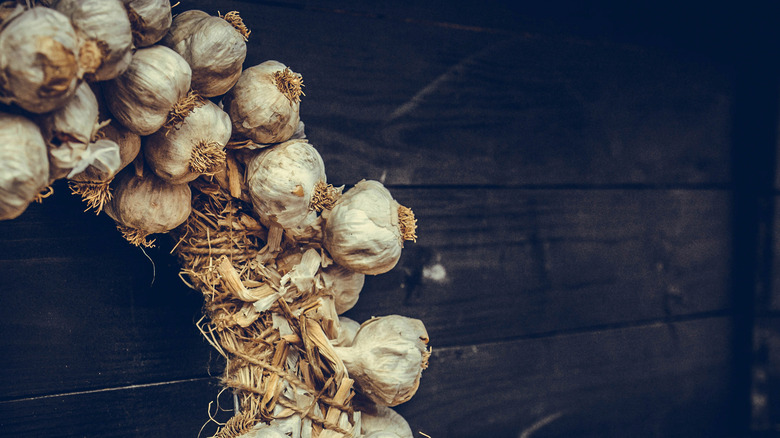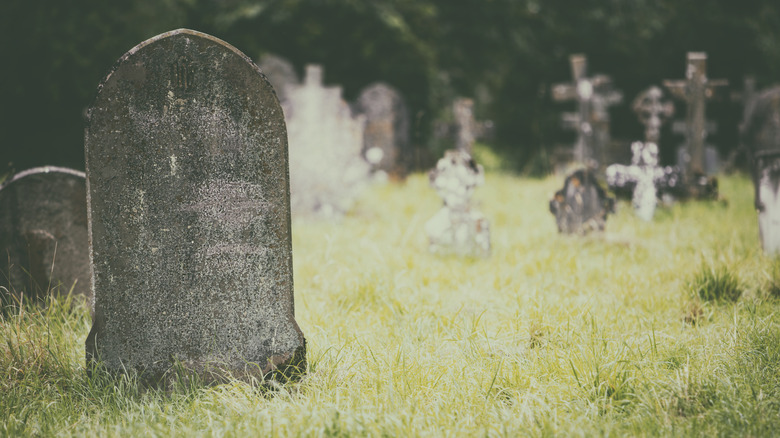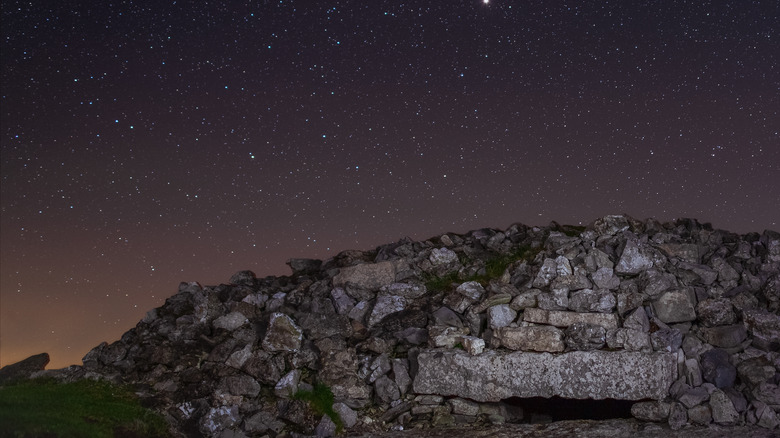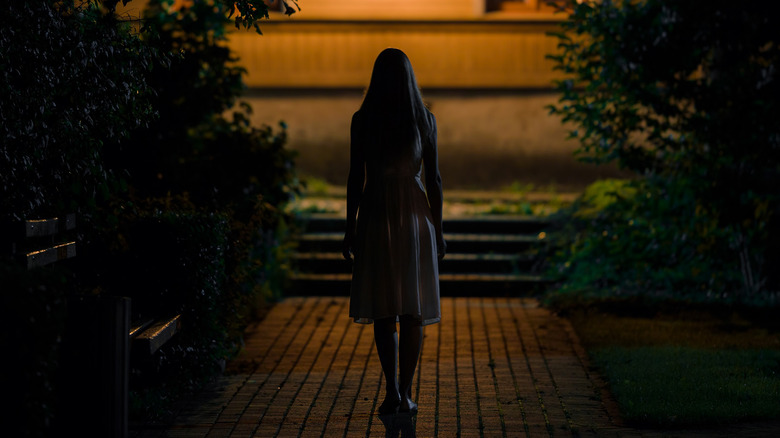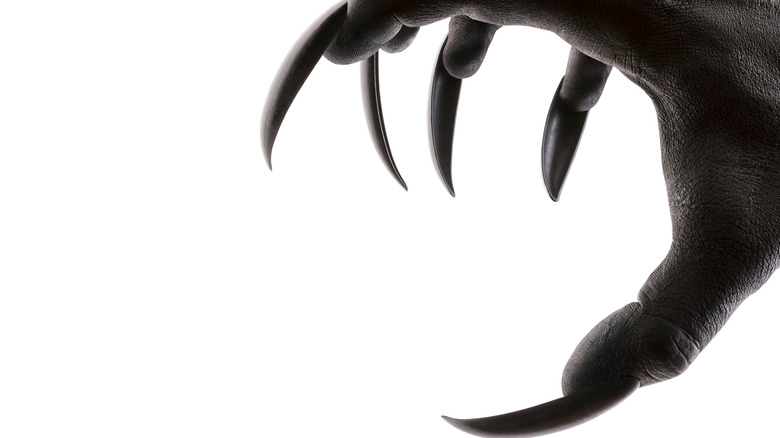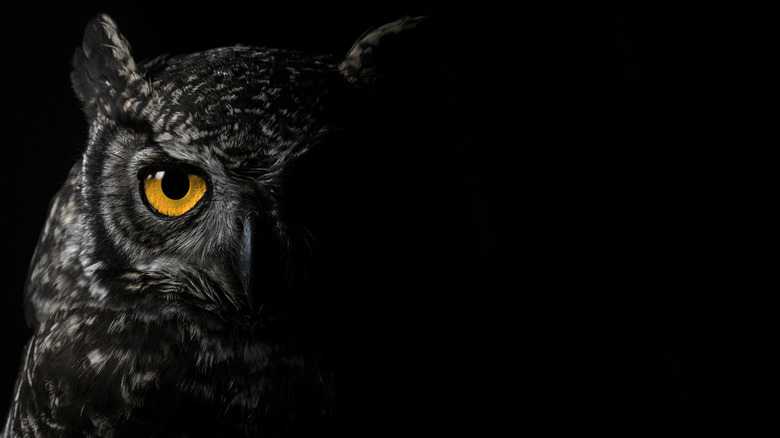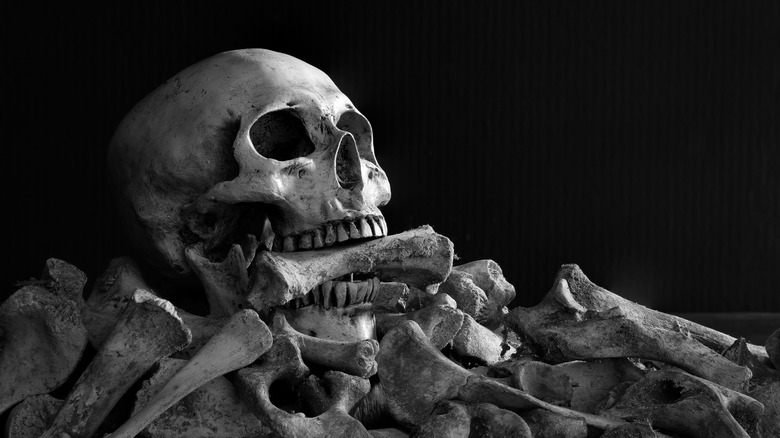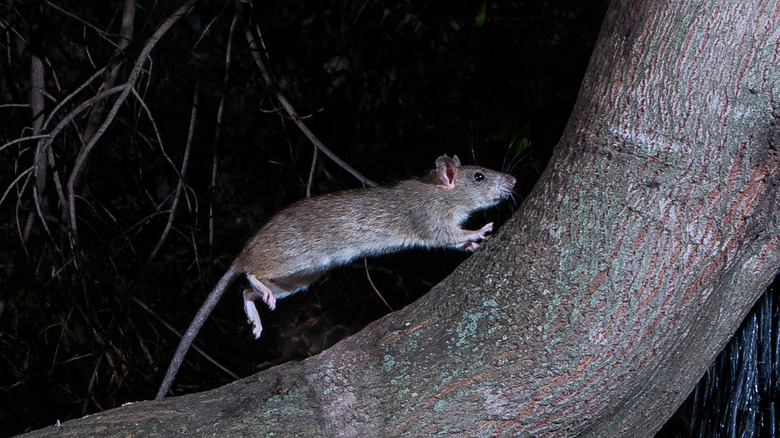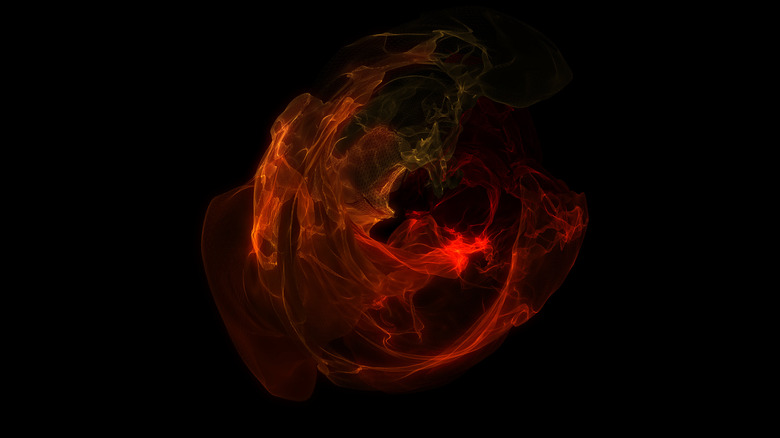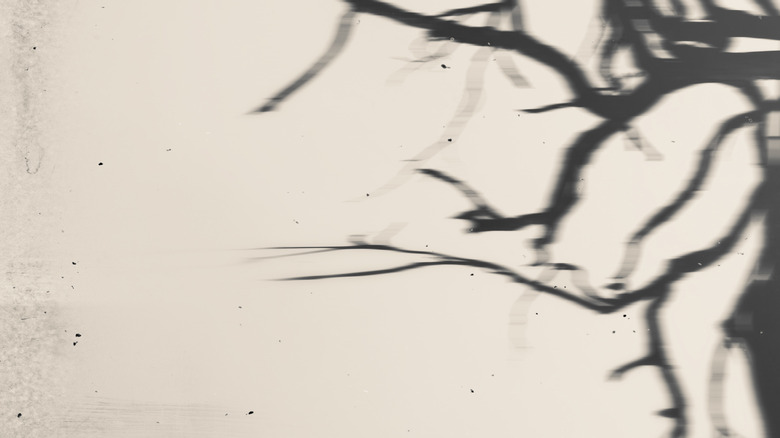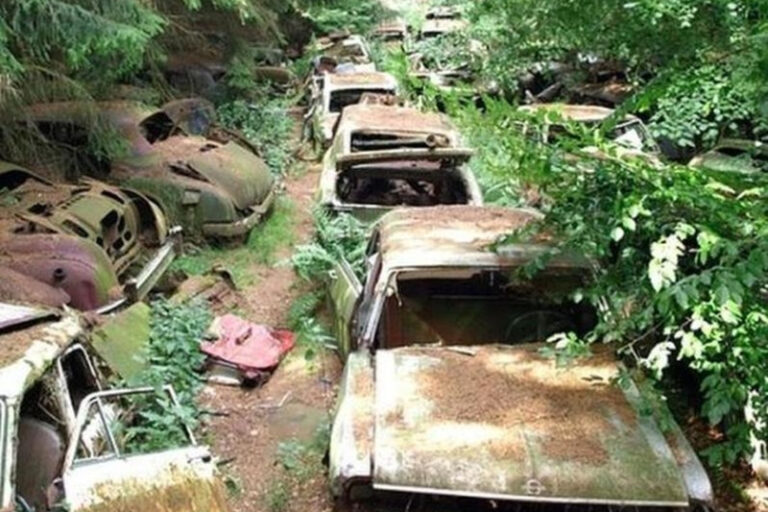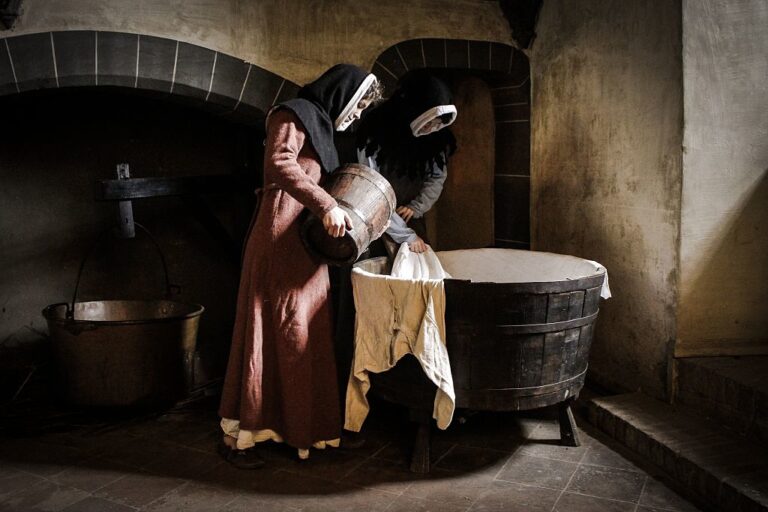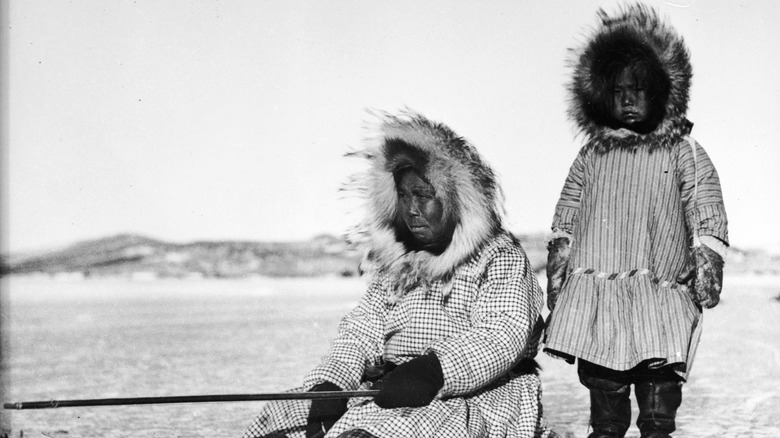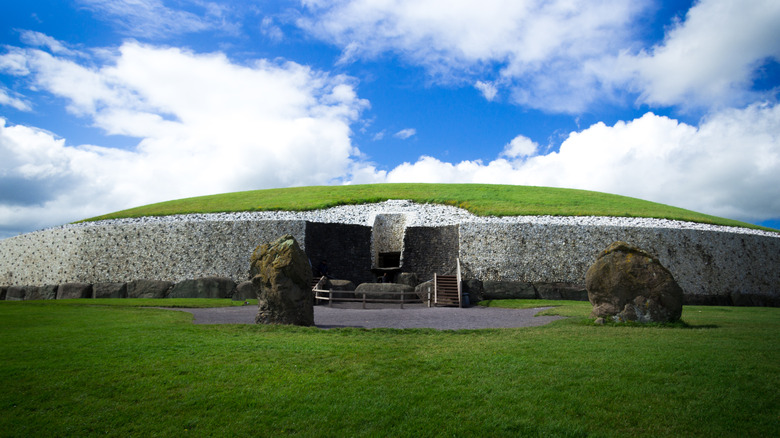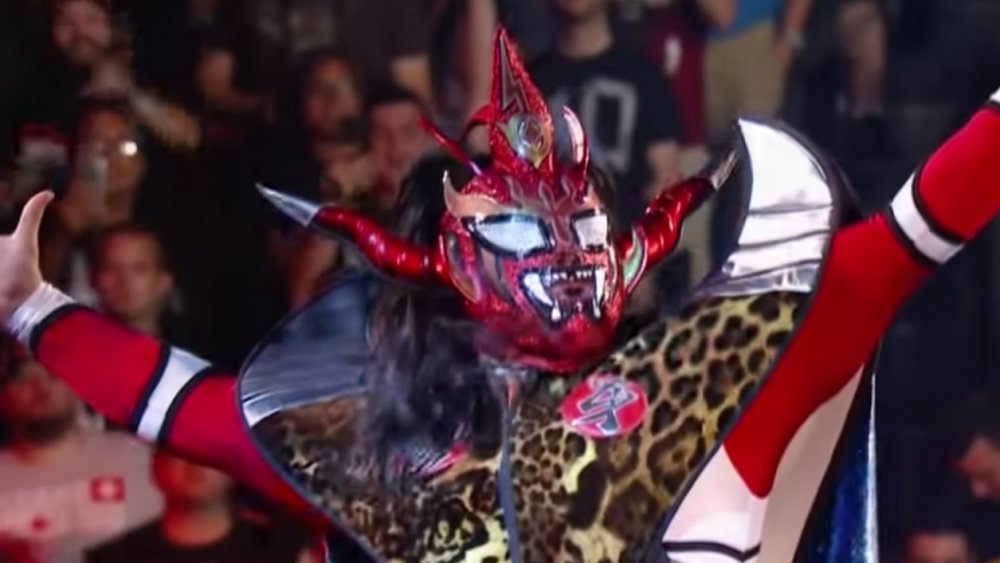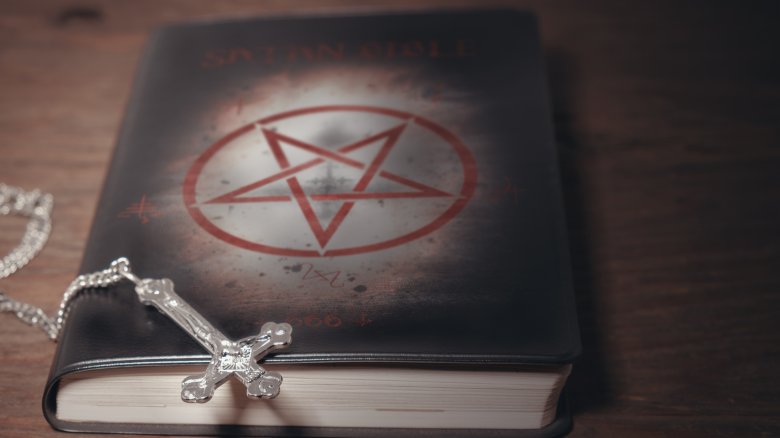
What Vampires Look Like In Different Cultures
Blood-sucking entities that rise from the dead to prey on humans have always captured the public imagination, and cultures all over the world have had legends of terrifying monsters and entities that resemble vampires since long before the word “vampire” ever existed.
There are many different possible explanations for this enduring fascination. One theory is that they spring from humans’ fascination with blood, which is described by Professor Jean Marigny as “that precious fluid that symbolizes the vital force, and whose loss poses a mortal threat.” Others, like Dr. Emily Zarka of Monstrum, have described the vampire as an explanation for real-world diseases prior to modern germ theory, or even a metaphor for “humans’ capacity for great violence.”
Depictions of these deadly creatures in legends across the world vary from modern popular Hollywood images of vampires in striking ways — but through their similarities, it is possible to see the fears that have haunted humanity for centuries.
Strigoi – Romania
Transylvania, located in central Romania, has become intrinsically linked with vampire lore. This has even made it a tourist destination for vampire fans, as can be seen from the variety of vampire-themed events available from sites like Transylvania Live. While it may have gotten notoriety as the homeland of Dracula, the creatures in the folk stories of Romania are quite different.
They are called strigoi. According to “Body, Soul, Spirits and Supernatural Communication,” from Cambridge Scholars Publishing, the strigoi can be one of two types — living or dead.
The living strigoi are depicted as being born with tails — but they might never be seen at all, because they have the ability to turn invisible. Signs that a community is being plagued by a living strigoi include cows going dry, men becoming sterile, and the spread of disease. While living strigoi have a lot of differences from the vampires of Hollywood monster movies, they share a weakness: garlic. The traditional way to ward them off is by smearing garlic oil on the doors and windows.
The dead strigoi are corpses that never decompose. According to traditional stories, in life, they were individuals who had two souls, and when they died, only one left the body. They can also be created by failing to provide the dead with proper funeral rites. They return from the grave and haunt their still-living relatives at night. They may come in animal form, or as insects, shadows, or fire.
Vrykolakas – Greece
Vrykolakas were originally depicted as harmless revenants that longed to decay naturally but were unable to due to their excommunication from the church — but over time, they became far more sinister.
Like the dead strigoi, the Greek vampires vrykolakas were first thought to be dead people who could never decompose due to improper burial rituals. According to Jean Marigny’s “Vampires, Restless Creatures of the Night,” they were also thought to be created when a body was buried in unconsecrated ground.
However, by the late 1600s, the vrykolakas tales had evolved. Rather than nonviolent creatures, they were the final stage in werewolf legends. In 16th- and 17th-century Europe, werewolves were considered a serious threat. The Catholic church even investigated claims of the werewolves and the undead. People began to believe that when a person who was a werewolf died, they came back as vrykolakas — which were now thought of as undead creatures that drank the blood of the living.
Shtriga – Albania
The shtriga is described as looking and acting like an ordinary woman so that she can live among her victims unnoticed.
According to “High Albania,” the shtriga causes terrible pain in her victims by slowly draining them of blood. Ultimately, they “shrivel and die.” Only one thing can restore them — the shtriga’s saliva. Even if the victim had been killed, they could be resurrected if she was forced to spit in their mouth — but only if it was done before sundown. If the sun set while they were dead, nothing could bring them back to life.
There is a way to ward off the shtriga in Albanian folklore, but it isn’t as easy to come by as garlic. When the shtriga finished feeding off someone, she would have to vomit blood. If a person was able to follow her to her hiding spot after she had attacked, they could collect the regurgitated blood on a silver coin. This would serve as a talisman that kept the shtriga away.
Another option is to trap the shtriga. First, the would-be vampire hunter would have to collect the bones of “the last pig you ate at a carnival” and use these to create the sign of the cross in front of a church the shtriga was inside on Easter Sunday. She would be unable to leave the church, except if carried out by the person who created the trap.
Loogaroo – the Caribbean
Like vrykolakas, the Caribbean vampire loogaroo has a mythological link to werewolves. These shape-shifters appear to be ordinary human women — until they shed their skin like a snake.
After dark, the loogaroo peels off her skin to hunt. According to Michael Welland’s book “Sand: The Never-Ending Story,” it wouldn’t be difficult to see the loogaroo coming. She flies around in search of potential victims, “flames shooting from her armpits and orifices, leaving a luminous trail through the sky.”
This isn’t the only form that the loogaroo can transform into — which is how she gets into the homes of sleeping people. She takes on forms small enough to slip through any crack, and once inside, she drinks the blood of her victims.
She has a weakness, however: compulsive counting. In order to prevent the loogaroo from attacking, people leave a pile of sand outside their doors. Before she can go into the house to attack the inhabitants, she is compelled to count every single grain of sand. Since the loogaroo must put her skin on by morning, people can be safe if they leave enough sand out for her to count.
Draugr – Scandinavia
The Old Norse draugr shares many attributes with Hollywood depictions of vampires, including the ability to heal their wounds and spread vampirism to humans. They are also undead.
According to “The Universal Vampire: Origins and Evolution of a Legend,” people who were “aggressive, sociopathic, and violent” in life might return as draugr. Despite being dead and buried, their bodies do not decay — but they do change. The body becomes heavier, and the skin becomes a very dark blue.
The draugr are depicted as hunting in the middle of winter, when it is coldest and darkest. They kill both livestock and humans, and they have a host of abilities to help them. Like the strigoi, they are able to cause epidemics. They are also able to curse individuals and “cause insanity.” When they need to escape, they can simply sink into the ground.
The way to defeat a draugr may be familiar as well — they must be decapitated and burned.
Dearg-due – Celtic
The Old Norse draugr is believed to have been influenced by Celtic legends of ghostly and vampiric creatures, as noted by “The Universal Vampire: Origins and Evolution of a Legend.” One of these undead creatures that may have diffused through mythology across cultures is the dearg-due.
To humans, these revenants appear to be pale and beautiful women who just happen to be wandering through a graveyard at night. According to Theresa Bane’s “Encyclopedia of Vampire Mythology,” the dearg-due “uses its beauty to lure men” to the graveyard and kisses them. Then she bites. She exsanguinates her victim, draining his blood from his mouth.
The blood-drinking dearg-due is undead, and according to legends, this can be the key to stopping the creature’s deadly attacks. If the place that the dearg-due was buried can be discovered and a cairn built on top of it, she will be trapped in her grave.
Asanbonsam – The Ivory Coast
The asanbonsam looks almost exactly like a human — except for its hands and feet. At the ends of its limbs are iron hooks.
According to Theresa Bane’s “Encyclopedia of Vampire Mythology,” these creatures are ambush predators. They hide in trees just out of sight, waiting for an unsuspecting human being to walk underneath. When someone does, the asanbonsam digs its iron hooks into them and drags them up into the branches. Once they have captured the person, the creature bites them and drinks their blood, leaving a drained corpse behind.
While these creatures are willing to wait motionless in the treetops until a victim comes by, they do have a backup plan in case no one walks underneath. The asanbonsam will leave the forest at night and sneak into houses. When it finds a sleeping person, it bites their thumb and drinks enough to survive.
To avoid being slowly drained in the night, people would regularly sacrifice goats, leaving enough blood on the ground to sustain the asanbonsam.
Cihuateteo – Mexico
Cihacotl is a “mother earth goddess,” whose name was frequently called out during childbirth. The goddess of midwives and women who died while giving birth has a destructive aspect, however. They are Cihuateteo, described in “Chicana Sexuality and Gender Cultural Refiguring in Literature, Oral History, and Art” as “reproductive demons.”
The Cihuateteo are revenants. They are sometimes depicted as having been virgins in life, or those who died in childbirth. They wait at crossroads, and when a man passes by, they attempt to seduce him into “adultery or other sexual transgressions.” If a child comes to the crossroads, the Cihuateteo will hunt them. They also attack infants, pregnant women, and women who have recently had children.
The Cihuateteo stories are believed to have influenced the popular legend of The Weeping Woman, also known as La Llorona. The La Llorona story has many variations but often describes her as a woman who killed her own children and now wanders by the water, wailing in remorse. Adults in the Southwestern United States tell this story to children to discourage them from going out after dark or being careless by the water.
Jiang shi – China
While many vampires are supposed to be a human being who has returned from the dead, jiang shi are different. Sometimes, they are depicted as being the result of two souls in one body, like the dead strigoi. Unlike the Romanian belief, where this is an uncommon occurrence, this comes from a belief that all people have two souls. According to Nigel Suckling’s “Vampires,” the base malevolent soul builds up power in the body and eventually becomes vampiric — especially in moonlight. Other stories depict jiang shi as demonic spirits that have taken advantage of a vacant human corpse and are able to control it.
The jiang shi has long claws, “red, staring eyes,” and long, pale hairs all over its body. The mention of this white or pale green hair was probably influenced by the appearance of grave mold. The smell of their breath is described as overwhelmingly toxic, and it may even kill those who breathe it in. They can fly and are far stronger than human beings.
The jiang shi shares a weakness with Caribbean loogaroo. If confronted with a pile of small things like seeds, the jiang shi will be forced to count them all before continuing to hunt. They can also be trapped inside a circle of rice. The creatures can be slowed down by beheading or driving a wooden stake through them, but the only way to ensure they don’t return is by burning them.
Stikini – Seminole
The stikini are a part of the traditional beliefs of the Seminoles, stretching from the East Coast of the United States to the state of Oklahoma. According to Carol Rose’s “Giants, Monsters, and Dragons: An Encyclopedia of Folklore, Legend, and Myth,” they are undetectable, looking exactly like humans until nightfall. Then they go to a secret place in the woods and vomit up all of their internal organs.
Once they have done this, they transform, taking on the shape of an owl. They hunt by flying through the night, looking for sleeping people. Rather than biting them and drinking their blood, they suck their victims’ hearts out through their mouths.
In order to transform back into their human form, they must return to their organs and swallow them. This can be the key to defeating the stikini, however. If someone finds the organs in the woods before the stikini is able to return and swallow them, the creature can be destroyed using “special arrows prepared with herbs and owl feathers.”
Forso – New Guinea
While there are a wide variety of vampires with startling appearances, the forso of New Guinea is one of the few that can’t be seen coming. According to Theresa Bane’s “Encyclopedia of Vampire Mythology,” the forso is completely invisible. Rather than drinking blood, this creature feeds off the “emotions, life energy, and sexual energy” of their victims, leaving them feeling drained, leading to bad luck, and even causing depression.
They don’t travel too far from their graves, but if anyone happens to come too close, they will attack. The forso can be kept away using prayers, but only if the forso in question was religious in life. There is a way to stop them for good, but it’s significantly different from the burning and beheading required to stop other vampires.
The immortal forso is considered “a lonely soul looking for attention,” and if people are willing to give it to them, the attacks may stop. First, the grave of the forso must be discovered and its bones removed from the Earth. They should then be taken home and cared for. This provides the forso with the attention it needs, and it will not need to feed off others.
Wampir – Russia
The wampir hides in plain sight like the stikini, but they don’t need to transform in order to hunt. They are indistinguishable from humans, except for the stingers hidden underneath their tongues.
According to “Global Legends and Lore: Vampires and Werewolves Around the World” by Adelaide Bennett, the wampir isn’t even restricted to hunting after dark and instead chooses to search for victims during the day. Once they find one, they use their stingers to daze the chosen victim before draining them of blood.
Like the jiang shi, the only way to truly get rid of a wampir is by burning them — but that’s just the beginning. As it is burned, the wampir’s body explodes, and “hundreds of maggots, rats, and insects” pour out. If even one of these infected pests escaped without being killed by the would-be monster slayers, the wampir would live on and would come back to kill them.
Asema – Brazil
The asema is able to live side by side with ordinary humans. During the day, they appear to be elderly men or women, but at night, they transform into a glowing orb.
Like the loogaroo, these vampires are often depicted as shedding their human skin to reveal their true form. According to “The Element Encyclopedia of Vampires,” this “blinding ball of light” can be pale blue, red, deep aquamarine, or dark blue.
The asena hunts by flying through the sky, searching for its prey — sleeping humans — below. When they find one, they either transform back into their human form to drain them of blood or remain as a glowing orb to drain their energy. The pale blue asema drains people slowly over time, so its victims are likely to survive their first attacks. The red, dark blue, and aquamarine varieties can be deadly in just a single night.
If a human eats garlic, their blood becomes distasteful to the asema. Like many other vampires, they are also compulsive counters, so piles of seeds may distract them. To ultimately destroy an asema, however, their discarded human skin must be found and burned.
Penanggalan – Southeast Asia
One of the most fascinating vampires is the penanggalan. According to Atlas Obscura, in life, these undead creatures were women who tried to use magic to become more beautiful but broke the terms of their magical agreement. In death, they hunger for the blood of newborn babies. It is their appearance, however, that makes them so unique.
During the day, they appear to be women, often working as midwives to get closer to vulnerable infants. At night, their heads fly from their bodies — dragging their organs below. According to “Aswang and Other Kinds of Witches: A Comparative Analysis,” she leaves her “motionless and gutless body” behind, like an empty shell. While hunting, the penanggalan can control her loose viscera like tentacles and uses them to reach into houses at night.
Those wishing to stop the attacks must first determine who the penanggalan is. One hint is that she has a strong smell of vinegar — which she uses to soak her entrails before returning to her body. If the empty corpse is discovered, the body can be stuffed with shards of broken glass. When the penanggalan returns to reattach to the body, her organs will be lacerated as she tries to force them inside.

Who Listens To The Pope's Confession?

The Reason Why John Adams And Ben Franklin Once Shared A Bed

How The One World Trade Center Pays Tribute To 9/11
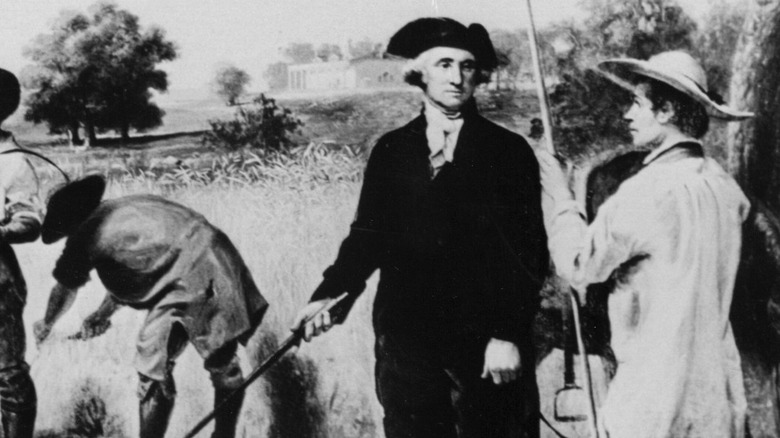
The Shady Way George Washington Kept Slaves His Entire Life

Here's What Would Happen If You Touched Lava
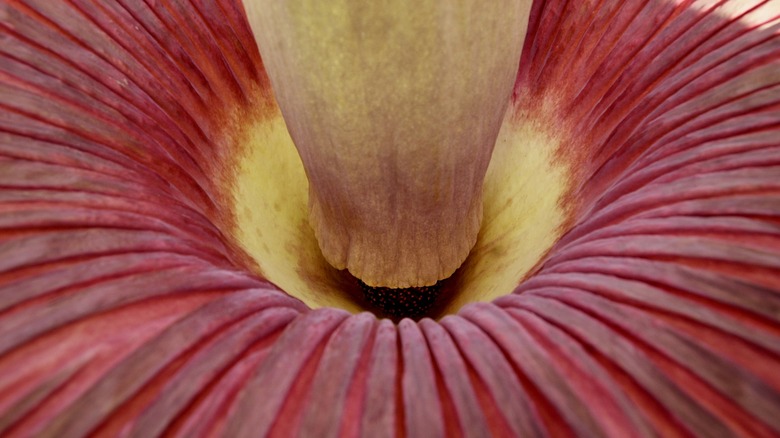
Plants That Are Near Extinction
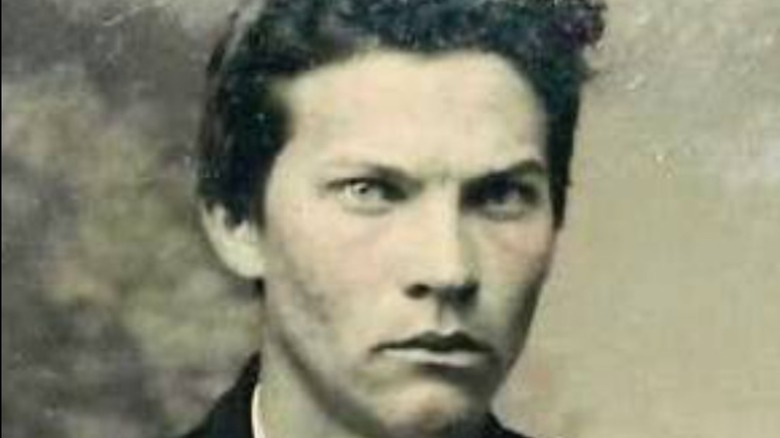
The Odd Reason John Wesley Hardin May Have Killed A Man

Everything We Know About Queen Elizabeth's Platinum Jubilee So Far
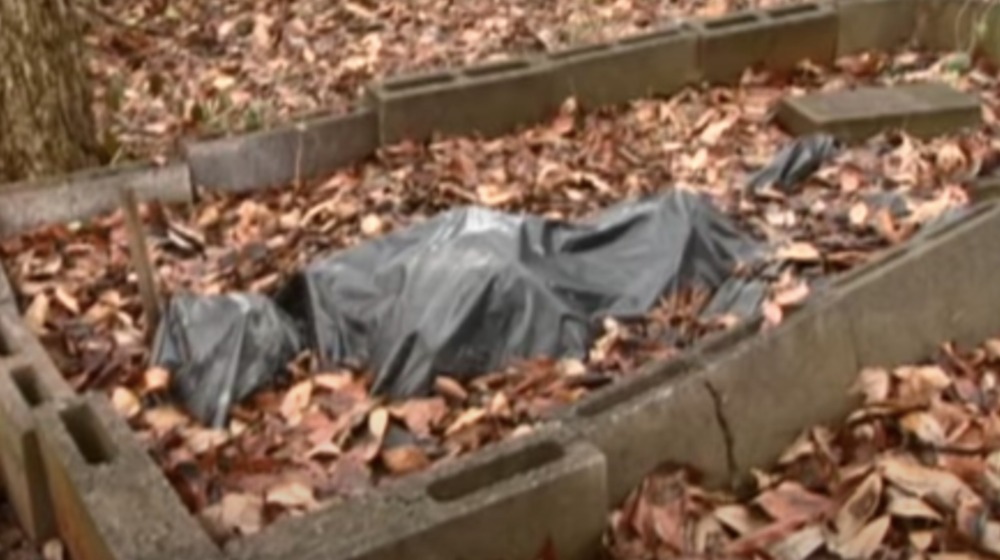
The Untold Truth Of Body Farms

The Hidden Meaning Of U2's 'Exit'
